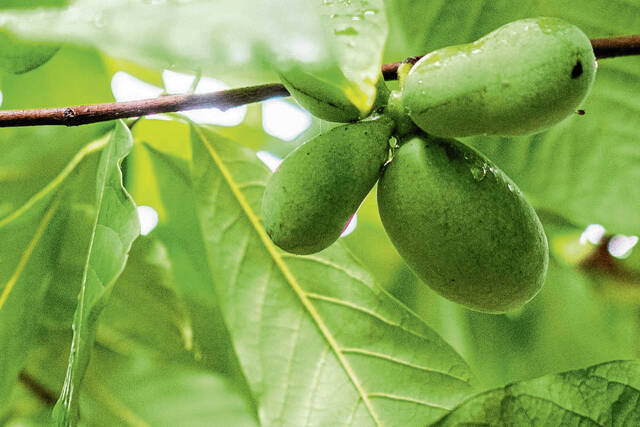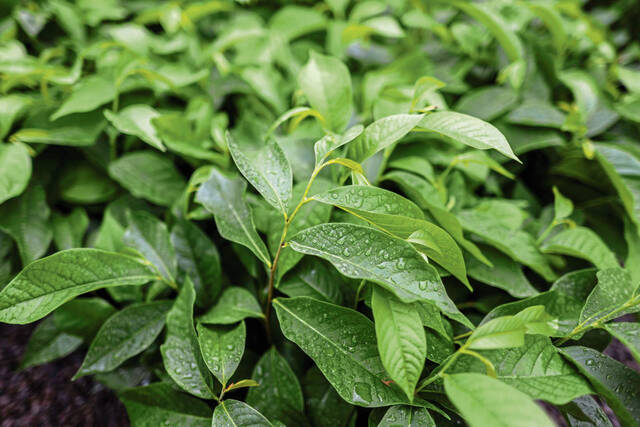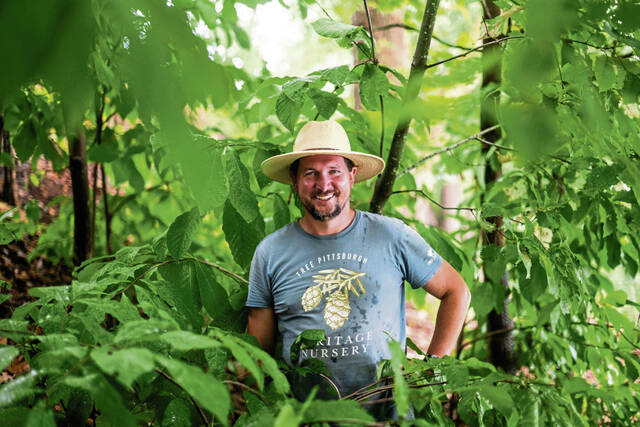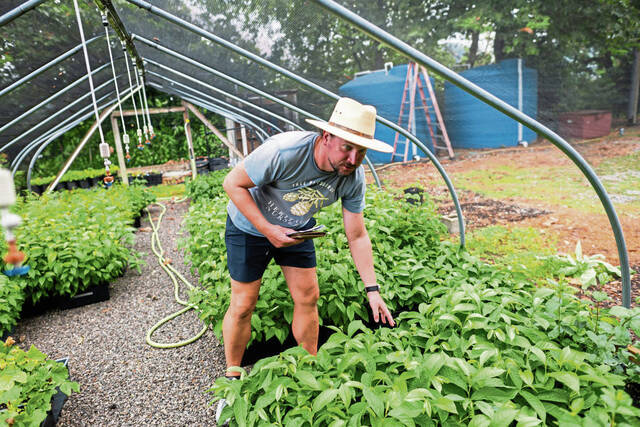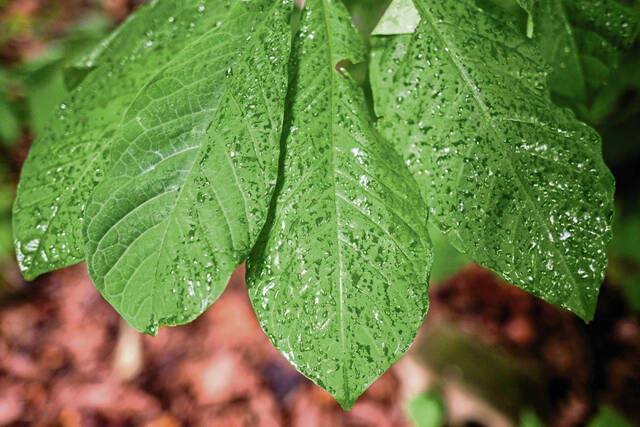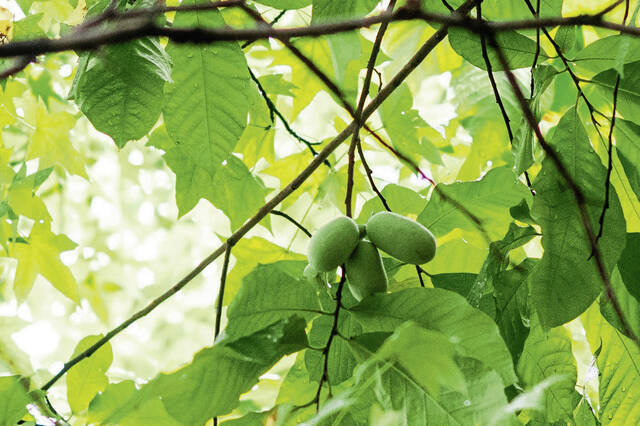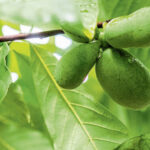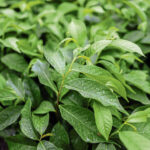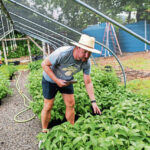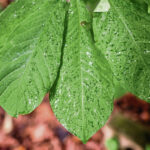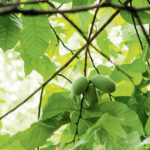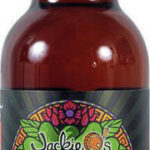As the calendar ticks over to September, summer may be over, but there’s still plenty to look forward to. For example: the return of football, seasonal fall Starbucks drinks and, here in Western Pennsylvania, pawpaws.
Confused? You’re not alone. These unique trees and the green, kidney-shaped fruit they bear may be indigenous to our area, but they’re one of the region’s best-kept secrets.
“In the past decade, it’s become popular. People are interested in it more and more,” said Alliy Gundlach, who serves as seed technician for Tree Pittsburgh, a nonprofit organization that grows and plants trees around the region and provides education and advocacy for the city’s urban forest.
Tree Pittsburgh grows pawpaw trees from seeds at its nursery in Lawrenceville and then provides them to the public when they reach about 3 years old.
“We do a lot of reforestation with them, but we do have quite a few that we sell to landscapers, things like that,” said Matthew Stanko, Tree Pittsburgh’s heritage nursery operations manager.
Jeff Guerrero, marketing and member services manager at the East End Food Co-Op, said they sell pawpaws and pawpaw tree seedlings from a local supplier every year. “People are ravenous for pawpaws; they love pawpaws. Especially Co-op members because we prioritize local produce, and not only are pawpaws local, they’re indigenous to the area.”
In Athens County, Ohio, pawpaws have been en vogue for some time. Chris Chmiel founded the organization Integration Acres in 1996, and he started the area’s famous Pawpaw Festival in 1999. This year, the festival will be held from Sept. 12-14 at Lake Snowden in Albany, Ohio.
Chmiel has been a passionate promoter of the pawpaw for decades, and he sees the festival as an opportunity to reveal the magic of this fruit to the public. “It’s a very education-heavy festival. There are a lot of educational tents,” he said.
Is it time to get on the trend? Here are some things to know about the mysterious fruit and the surprisingly cool tree from which it grows.
‘Way down yonder in the pawpaw patch’
Asimina biloba have flourished in North America for thousands of years. The trees are famously hardy, requiring little maintenance and managing to be mostly pest- and disease-repellent — an attractive feature in a quickly evolving ecosystem.
Extending throughout the eastern United States, the tree belongs to the tropical “custard apple” family but can tolerate the temperate-to-cold climate of the Northeast.
At the three-year mark, when Tree Pittsburgh distributes them, they’re about three feet tall. Owners of their own pawpaw tree can expect it to bear fruit at about 7 years old — two are necessary to produce fruit, though.
“You need to have two. It’s not necessarily a male-female issue. They need to be genetically different in order to produce fruit,” Gundlach said. “It’s something that the plant evolved to have. Each tree, they have their own female and male flowers, but they need a separate one that’s genetically different from it.”
This reproductive method evolved to give pawpaws more genetic diversity and make them hardier.
“It’s a great understory tree, which is really important in the forests here in this region. There’s not a lot of great understory specimens, so the pawpaw is a really good one,” Stanko said.
Native Americans have a long history with the trees and fruit, as well. Lewis and Clark ate the fruit on their famous expedition. And the pawpaw gained its name from early European settlers, who confused the large fruit with papayas.
And don’t forget the Lower Appalachian folk song that’s still widely taught at schools: “Way Down Yonder in the Pawpaw Patch.”
It’s no wonder the trees have stuck around for so long — they have tons of natural defenses. On the other hand, they are the only existing host plant for the zebra swallowtail butterfly’s larval stage, meaning that they help to bring just a bit more beauty into the world.
“It’s well adapted to our soil already, our climate and our pollinators,” Stanko said.
They also repel pests, including deer, making them great trees with which to surround your garden.
“Nothing wants to mess with them because they have a specific scent,” Stanko said. Tree Pittsburgh even keeps pawpaw trees outside of the tall fence around its nursery. “They live outside of our deer fence, and we don’t have any problems.”
A taste of the tropics right outside your door
The pawpaw berry is large and green-yellow with yellow flesh. According to Gundlach, it’s often called a “banango” because of its flavor’s similarity to a cross of a banana and mango.
Unfortunately, the fun is fleeting — pawpaw fruit is in season for a very brief time in September, and they are ripe only for a day or two before their prime passes. That’s why they haven’t found a wide distribution in supermarkets.
Chmiel said one of the aims of the pawpaw festival is to teach people how to choose the best pawpaw.
“A lot of times people go out, go on a hike, and they see them up in the trees — they’ll shake the trees — and it falls down. And they’re like, ‘this is hard as a rock’ and they don’t taste very good. Actually, they’ll make people nauseous,” he said.
“Ideal situation, you’re out in the pawpaw grove or orchard, and you see the fruit and it falls into your hand.”
At the Ohio Pawpaw Festival, each of the food vendors has a dish that includes pawpaw.
“It depends on the genre of the food vendor. An Asian twist on it might use a pawpaw slaw. You get people with ice cream, Popsicles, drinks, funnel cakes, salsa — millions and millions of options, basically,” Chmiel said.
Dishes available at this year’s festival will include pawpaw lemonade, pawpaw-and-lime sorbet, pawpaw hot sauce, pawpaw cotton candy and pawpaw cream puffs. Endless paw-ssibilities, if you will.
The pawpaw is such a versatile ingredient that the festival even holds a cook-off every year.
Chmiel himself is a purveyor of a number of pawpaw products at Integration Acres, including pawpaw spiceberry jam, salsa, frozen pawpaw pulp and pawpaw maple vinaigrette. His products are available in Pittsburgh at outlets including the East End Food Co-op and Chantal’s Specialty Cheese Shop.
“One thing that’s really popular with pawpaws is to use them in baked goods and other dessert items,” Guerrero said.
Pawpaw cookies, custard and pies are fun and delicious uses for the fruit.
Gundlach said anything that emphasizes the flesh’s unusual custardy texture, such as cheesecakes, can be a delicious vehicle for a pawpaw fix.
There are also some treats just for the grown-ups. “They can also be used to make alcohol,” Guerrero added.
It may sound unusual, but pawpaw liqueurs and even wine are seasonal items for many wineries and distilleries. These alcoholic beverages are sweet, tropical and aromatic.
Then there’s pawpaw beer, which you can find at the Ohio Pawpaw Festival, as well as in many regional breweries.
Chris Raubenstraw, production manager and head production brewer at Jackie O’s Brewery in Athens, Ohio, said their Pawpaw Wheat beer is a perfect annual treat.
“We get to utilize a unique, local fruit that is prevalent in our area. The pawpaw that we use is from literally right down the road from our friends at Integration Acres, who process the fruit for us. The beer is made for the Pawpaw Festival.”
He said the Pawpaw Wheat is on the higher-alcohol end of wheat beers.
“The fruit is added during the main fermentation process of the beer, so that the yeast consumes some of the pawpaw sugars, giving more alcohol and a less sweet flavor. It ferments for a little over a week.”
He feels that it’s special to use such an underutilized fruit.
“A lot of people don’t even know it exists. We are privileged to have them growing in our backyards and local hills.”
Because of their short ripening period, finding ways to lengthen the lifespan of the fruit is crucial if you don’t want to gorge yourself in one or two days.
You can cut the fruit in half or even just squeeze it hard enough to break the thick skin and scoop out the flesh — just be sure to avoid the large black seeds at the fruit’s center.
“The most popular I see is just a spoon,” Gundlach said.
According to Penn State University, the fruit is highly nutritious, containing vitamins such as vitamin C, riboflavin, niacin and folate, and minerals including potassium, iron and magnesium.
Their season may be fleeting, but pawpaws are well worth seeking out late this summer — both as a sustainable tree and a delicious treat to usher in autumn.


